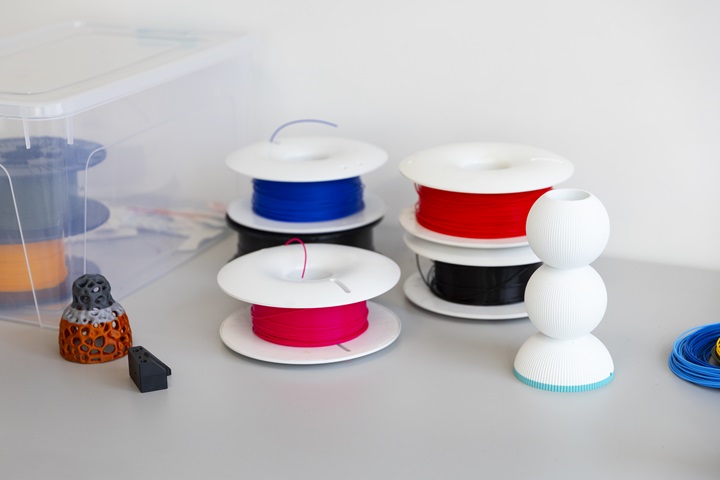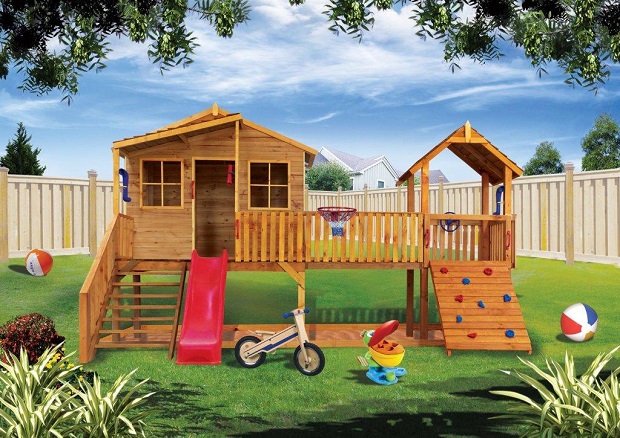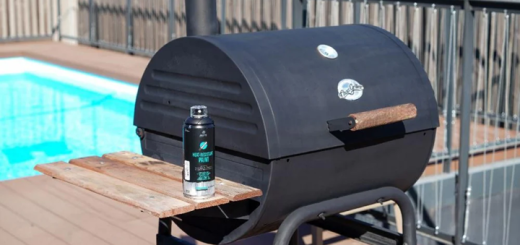The 3 Types of 3D Printer Filaments to Choose From
These days, the internet is a treasure trove of products. From vintage clothes and gaming gear to tech gadgets and furniture, there’s almost nothing you can’t buy online. The same thing goes for filaments. If you’re into 3D printing, there is a vast range of materials available online, each one shaping how your digital designs come to life.
In a way, choosing the right filament is like picking the perfect ingredient for a recipe. Regardless of how skilled you are at baking or how flawless your printer settings are, the wrong filament can spoil the final creation. This said, you want to pick the right type for your projects.
ABS

ABS filament is one of the most popular materials for many reasons. It’s rugged, durable, can withstand hot temperatures, has excellent melt flow, and is resistant to strain and abrasion. ABS also happens to be the same plastic Lego bricks, phone cases, appliances and protective gear parts are made from, so you know it’s built for durability.
Therefore, if you need to print mechanical components, tools, or even prototypes that need to be tested under stress, ABS 3D printer filaments are a reliable go-to material. You can use it for prototyping, low-stress end-use components and other practical applications.
Another feature that makes ABS stand out is how well it responds to post-processing. It can be painted, machined, and reworked. This helps you get the desired look you’re after, making ABS a suitable choice for projects where function and aesthetics both matter.
Next, ABS 3D printer filaments are widely available and cost-effective. With this type of printing material, you can test designs or make low-volume parts without breaking the bank. Leftover pieces can even be reused for smaller jobs or testing.
However, ABS is more prone to warping. It must be printed on a heated bed and ideally in an enclosed chamber, or else it will warp and emit strong fumes while being printed. This makes it a bit more challenging for beginners to handle.
PLA
If ABS can be tricky to print, then PLA is usually the go-to for beginners. It’s easier to handle, prints at lower temperatures, and produces almost no odour.
Compared to other 3D printing materials, PLA can produce smoother surfaces and finer details. This advantage can be used for miniatures, decorative items with intricate textures and props with intricate designs.
Made from renewable resources like corn starch or sugarcane, PLA is biodegradable and more environmentally friendly than traditional petroleum-based filaments. If you want your 3D printing projects to be more eco-conscious, go for PLA.
On the downside, PLA is less durable and heat-resistant than ABS. Parts printed from PLA can soften, warp, or even deform if exposed to high temperatures, such as being left in a hot car or near a heater. Therefore, you can use this material for decorations, prototypes, or models that do not need to endure rough use.
TPU

PLA and ABS are among the most common 3D printing filaments you’ll find online. However, if you’re looking to move beyond rigid plastics and explore a more versatile option, TPU is a flexible alternative. Unlike PLA and ABS, which are stiff, TPU has a rubber-like quality. In fact, many products that we think of as rubber are actually TPU.
Parts printed in TPU can bend and stretch without breaking and absorb impact. Because of these features, TPU is ideal for creating items that need to fit snugly around another object or provide cushioning. These may include things like phone cases, gaskets, seals, and protective covers. Its ability to absorb impact also means it’s often used for bumpers and vibration dampening.
Furthermore, TPU is a very durable 3D printing material with high abrasion resistance. This means that parts won’t wear down quickly when in constant contact with surfaces. For instance, wheels, drive belts, and protective gear are often made with TPU because it resists surface damage over time.
Another thing to note about TPU is its Shore hardness – a scale that measures how soft or firm the material is. TPU filaments are available in a wide range of Shore hardness values, ranging from very soft and rubbery (around Shore 85A) to firmer, more rigid grades (closer to Shore 95A or higher).
This flexibility in hardness levels means you can choose a TPU that matches your project’s needs. Softer options are perfect for stretchy, grippy items like stress toys or flexible joints, while harder grades are better suited for parts that need a balance of flexibility and structural support, such as protective cases, insoles, or mechanical components.
On the flip side, because it’s elastic and flexible, TPU can be a bit tricky to print with. It requires slower speeds (often under 30–40 mm/s) to maintain print quality and prevent clogging, and it may also be prone to stringing and dimensional inaccuracies if the printer isn’t properly calibrated.





